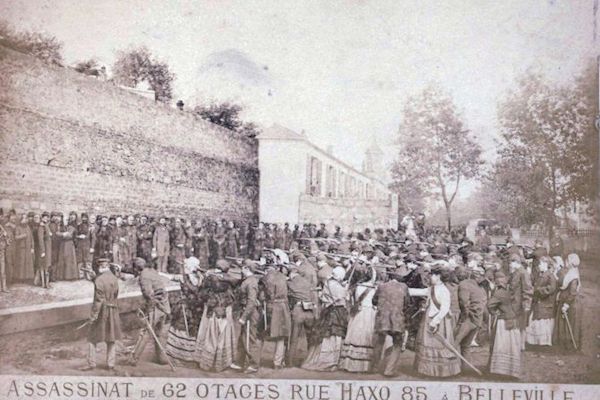Five priests executed by radicals during the 1871 Paris Commune have been beatified in Paris without incident, as the massacre apparently fades from relations between France’s believers and secularists.
Over 2,000 people crowded into Saint Sulpice Church to honour the five martyrs shot dead in odium fidei (hatred of the faith) on 26 May 1871. Cardinal Marcello Semeraro, prefect of the Dicastery for the Causes of Saints, presided at the service on 22 April.
The massacre of 52 victims in a working-class quarter of eastern Paris was one of countless executions in the ferocious “bloody week” that ended the Paris Commune. Estimates of those killed by both rebels and government troops range from 6,500 to 20,000.
The Paris archdiocese, represented at the ceremony by Archbishop Laurent Ulrich, kept a low profile and police turned out in force to assure security. Cardinal Semeraro spoke of “an intricate and complex story” surrounding the massacre.
The Paris Commune, the two-month revolutionary regime that followed the Franco-Prussian War, can still stir animosity between Catholics and anti-clericals in the capital.
A 2021 procession honouring Catholic victims of the Commune, who included Paris Archbishop Georges Darboy, encountered a group leaving a pro-Commune ceremony. The radicals attacked the Church procession, provoking a strong response from the then-Archbishop of Paris Michel Aupetit.
Catholics and secularists disputed whether the procession was a peaceful commemoration or a political provocation.
The 52 executed on Rue Haxo in the 20th arrondissement, where the Church of Our Lady of the Hostages now stands, were arrested as government supporters during the Commune.
Most prominent of the beatified was Fr Henri Planchat of the Society of St Vincent de Paul, a “street priest” who worked with the urban poor and backed several of the reforms advocated by the Commune.
The other four priests – Ladislas Radigue, Polycarpe Tuffier, Marcellin Rouchouze and Frézal Tardieu – were from the Congregation of the Sacred Hearts of Jesus and Mary, better known as the Picpus Fathers.
Beatification causes were begun for many of the 23 clergymen executed during the “bloody week” but gradually faded from view. In the post-war period, Catholic authorities often shied away from them to avoid fanning tensions with the once-powerful Communist Party.
The Vincentians and Picpus Fathers resumed their support for these five priests’ causes over a decade ago, leading to their beatification.


 Loading ...
Loading ...